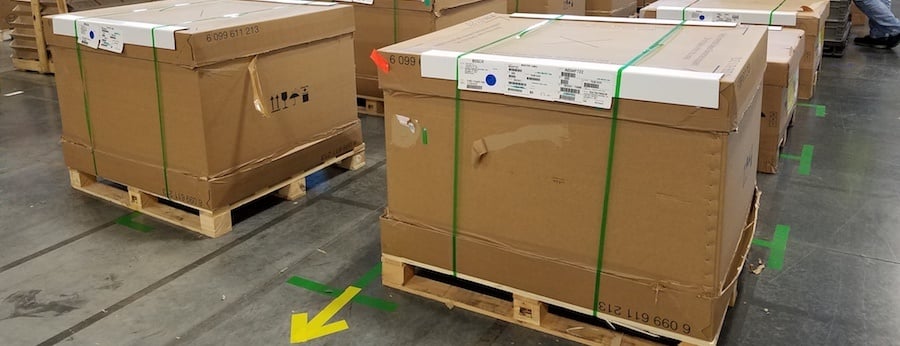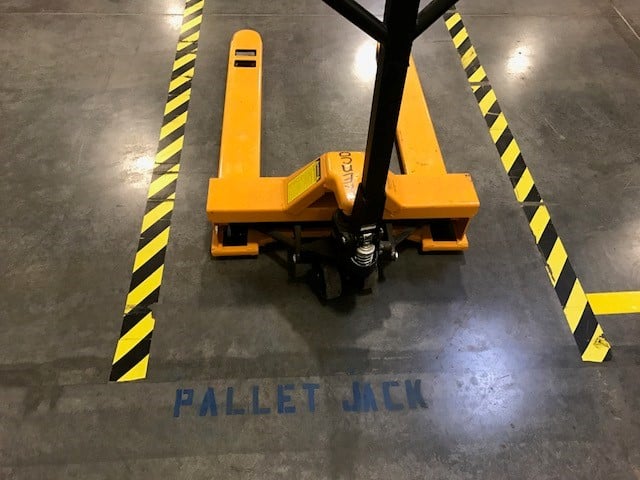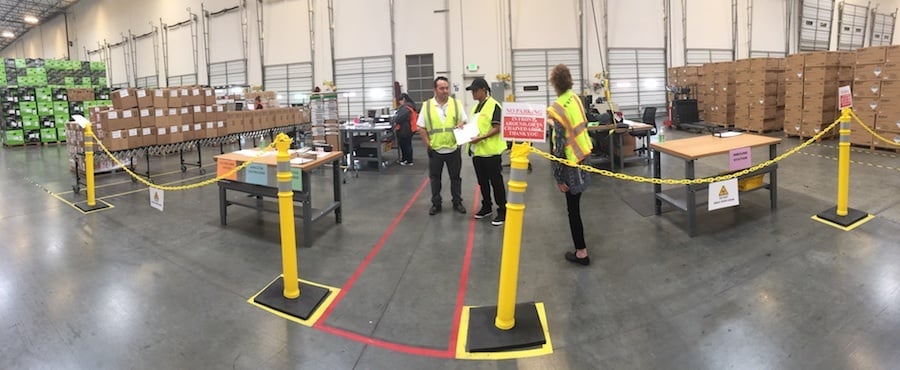Visual control is one of the most popular concepts making its way into the warehousing industry today, but companies considering it
A warehouse that demonstrates “system thinking” utilizes a strong use of tools and techniques for business improvement and have developed effective systems to create continuity and consistency of tools application throughout the business entity.

It might be uncomfortable, and you might even experience pushback from certain areas of the company––”new” can be an intimidating word, after all. If you run up against a proverbial wall, keep in mind: even if visual management is implemented perfectly, if the support to sustain it isn’t in place, it will eventually fade. Managers will look up one day to discover the “way we’ve always done things” has settled right back into place.
Innovate your workflows the right way, with planning and dedication to your end-goals, and you’ll find this powerful concept will transform the way you do business within your warehouse walls.
How Long Will Visual Control Take to Implement?
Unlike some business improvement practices, the timeline attached to visual management isn’t necessarily tied to common metrics like company size, capital, and so on; it’s linked to complexity. The more moving parts in your warehouse operations, the more touch points you’ll need to cover as you implement. As a general guideline, it can take as little as 6 months to start showing substantial results
Remember, well-exercised visual management isn’t just about direct cost savings, it’s also about reducing expensive errors, inefficient or outdated practices, and even workplace accidents.

How Will It Transform My Warehouses?
A warehouse with supported visual control in place will be a workspace where everything a staff member could need is easy to locate––without assistance. Their guides and tools are well-situated in an appropriate area and labeled.
This means less time running up and down the chain of command, less confusion about procedures, and less time- and cost-wasting “workarounds” for broken or outdated links in the workflow chain. New staff acclimates more quickly, and a sick or absent team member with individual knowledge doesn’t bring everything to a grinding halt; delays are the biggest operational mishap that can befall a company.
With management buy-in, you can add efficiency to every facet of your workflow with three very simple questions:
-
What went well?
-
What didn’t go well?
-
How can we improve it?
With these answers in hand, involve your associates––even and especially non-managerial roles––to get additional feedback and implement a plan-do-check-act model.
As you move further away from the C-suite toward “boots on the ground” positions, you’ll gain valuable insight into your actual warehouse procedures as they stand, allowing you to build a sturdy, self-minding, self-reporting framework for maintaining visual control.
This is another key way your warehouses will transform: your associates become the empowered experts. They are the individuals who can tell you what needs to be labeled, why it needs to be labeled, where it needs to be placed, and what needs to be cut out entirely. Reports, figures, and data can only do so much: to make a real difference you’ll need to focus on the foundation first, not a top-down view of your organization.
Visual management is, again, simply a tool to help you adjust toward efficiency. It can’t be the only tool in the tool belt. It needs the plans that are currently locked up in the knowledge and experiences of your warehouse staff.
How Do I Implement Visual Management?
Education will need to be your first step to successful visual control, no matter where you begin. Right now, there is a divide between the boots-on-the-ground employees and their degree-based, experienced managers.
This might be a subtle difference, such as a dialect mismatch as opposed to an entirely different language, but it’s still one that needs to be corrected. Just like learning a new language, your new mutual language will need to be built from the ground up with simple agreements: arrows for the process, numbering assets like forklifts, numbering forklift spaces, posting your verbal rules, and so on.
It may seem overly simplified to experienced, tenured engineers, but ask your managers to suspend skepticism until they take a Gemba walk once this language is established. The results will speak for themselves. Remember, even the simple lines painted in a parking lot are the difference between orderly use and a nightmare of right-of-way fender-benders: if simple lines are so powerful in the “civilian” world, imagine what they can do in your warehouse.
What Are the Obstacles to Visual Control Implementation?
The largest cost
There will also be a learning curve and pushback from those who don’t like leaving their respective comfort zones. Changing anything about your foundation will have the same costs, however, and visual control offers benefits that will last well beyond a handful of years. Higher level management will need to be informed and encouraged throughout the process, as it will take some time to point out concrete results. Committing to excellent before-and-after experience reporting and workflow speed recording will expedite the process considerably.
If you’re ready to start exploring visual control in your own warehouse, here are a few parting tips to start you on the right foot:
1. Hang housekeeping “shadow boards” that have a silhouette of each tool where it needs to be kept. When you take the tool away, the shadow shows the tool is gone and needs to be returned.
2. Post your concisely edited warehouse rules in a prominent area for all to see each day. No more passed-down knowledge, word of mouth, or “the way we’ve always done it.”‘
3. Tape, or ideally, paint, lines on the floor for everything to show its place. The lines don’t necessarily need to be exact, but they should give your team members guidance with each action.
4. Label all supply closets to cut down on wild goose chases in moments of operational need.
5. Paint, etch, or label numbers on equipment to expedite discussions and reports of malfunctions.
6. Simplify and centralize your paperwork flow: no more hunting in far-flung filing cabinets for various folders.
Another roadblock which might keep your visual control from its ultimate success is oversight miscommunications. Sometimes we mistake “process improvement” with more oversight and supervision to tell associates what to do. We try to overcomplicate the simple tenets of visual control.

High-level engineers say, “Why put tape on the floor? We’ll just schedule more office meetings and discussion groups.” These efforts always fail for a few reasons: There’s an obvious lack of involvement from the associates (who are your everyday experts). Also, leadership gets very frustrated because they can’t figure out why it won’t sustain improvements. They say, “We took action based on reports…why did it not work?”
If you’ve found yourself in this mindset while trying to improve your processes, you haven’t started with the associates who understand the ins and outs of how important small visual cues can be.
To Sum It All Up
Visual control works. With the right dedication and management buy-in, it will work for you, as well. Between 2011 and 2015 Kenco has saved over $25 million from LSS projects; concrete proof there is substantial cost savings to be captured through efforts like these.
By emphasizing visual management, standardization, and observation tools, such as Gemba walks, Kenco has effectively eradicated unnecessary processes and brought the highest possible value to our customers.
Want to learn more before you take the plunge in your own company? Discover the story of Kenco’s operational success through utilizing visual management.
You can also learn more about warehouse efficiency in our eBook below:
{{cta(‘722fff3c-7ca1-401f-b408-696d525c5317’)}}
